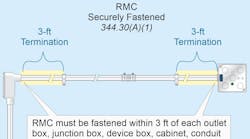Q. What is the NEC requirement for overcurrent protection of flexible cords and fixture wires?
See the answer below.
This answer is based on the 2017 NEC.
A. Flexible cord must be protected by an overcurrent protection device in accordance with its ampacity as specified in Table 400.5(A)(1) or Table 400.5(A)(2) [240.5(A)]. Fixture wires must be protected against overcurrent in accordance with their ampacity as specified in Table 402.5. Supplementary overcurrent protection, as discussed in Sec. 240.10, can provide this protection.
Branch-Circuit Overcurrent Protection [Sec. 240.5(B)].
(1) Cords for Listed Appliances or Luminaires. If flexible cord is used with a specific listed appliance or luminaire, the conductors are considered protected against overcurrent when used within the appliance or luminaire listing requirements.
Note: The NEC only applies to premises wiring, not to the supply cords of listed appliances and luminaires.
(2) Fixture Wire. Fixture wires can be tapped to the following circuits:
(1) 20A – 18 AWG, up to 50 ft of run length
(2) 20A – 16 AWG, up to 100 ft of run length
(3) 20A – 14 AWG and larger
(3) Extension Cord Sets. Flexible cord used in listed extension cord sets is considered protected against overcurrent when used within the extension cord’s listing requirements.
These materials are provided to us by Mike Holt Enterprises of Leesburg, Fla. To view additional Code training materials offered by this company, visit www.mikeholt.com/code.





